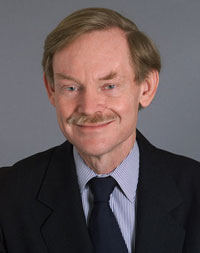
By Patrick Kagenda
The World Bank president Robert B. Zoellick just ended an African tour that took him to Sierra Leone, Cote d’Ivoire, and Ethiopia.He told the African Union meeting in Addis Ababa that an estimated 64 million people worldwide will fall into extreme poverty because of the global financial meltdown crisis and some 30,000-50,000 babies may die in Sub- Sahara Africa in 2010. He later addressed African journalists via video conference. The Independents Patrick Kagenda attended and below are excerpts.
What is your view on the World Bank working with Chinese companies which have had a large presence on the African continent in terms of infrastructure projects?
We welcome China`s investment into Sub Saharan Africa. We think that it has potential to build infrastructure, create additional jobs and possibly create some new investment possibilities in the manufacturing sector. We have wanted to work with both Africa and China.
It doesn’t do Africa much good if China comes in and brings Chinese workers. So we have tried to suggest ways that this investment can be more productive and create more jobs. In the case of the DRC, where China came and had a very large infrastructure and mining project, we worked with both the Chinese and the DRC government. We were able to do that effectively with both parties. I have had a number of occasions to talk to everyone of them from Premier Wen Jiabao, but particularly with most of the ministry of commerce officials. In Ethiopia, there are two Chinese companies that have come to try to build a new industrial zone.
What about co-operation between the World Bank and China on infrastructure or manufacturing for export in African countries?
We may at sometime look for opportunities to co-invest with China. Sometimes we may try to help and work with the local government to build the infrastructure. In some cases it is goods that are for export and need to have the customs procedure to be able to move quickly, eliminate corruption or bureaucratic mishandling. If you look back at the growth of East Asia, starting with Japan, Korea, Taiwan, south East Asia and China, they have used the model of basic manufacturing before you move out to the value addition chain. I am not saying this is going to happen overnight, but you can see in South Africa. This is going to occur elsewhere particularly if we combine it with the building of sub-regional markets. The EAC has made some significant headway of this. If you are a landlocked country like Rwanda or Uganda it is even more important because you need access to the ports, you need railways systems, you need a road system, and you also need the software development. Last year when I was visiting Uganda, I went to a border post with Kenya where we helped use some information technology and a new system to reduce the clearance time of trucks from two days to less than two hours. We have issued a report about logistics cost and logistics ranking and tried to figure out how we can support this. I know the big issue in Uganda is creating electricity. We have been involved with Bujjagali dam and we are looking at other projects.
Why are you insisting too much on the development of new technologies for Africa when we have other priorities like infrastructure and agriculture?
What has been striking is that over the past ten years there has been almost US$ 60 billion of private sector investment in sub-Saharan Africa in ICT. And if we had had such a session ten years ago, I think people would have thought this would have required government investment. They could never imagine volumes of such amounts. You have seen individuals like Mo Ibrahim create whole new businesses and opportunities. The way the World Bank is in this environment is multiple. We try to work with countries to set up the right policy environment. On whether the African leaders are willing to boost ICT, it varies. President Kagame of Rwanda has been a real leader in using telecommunications technology not only as a business but also as a service opportunity for government.
What special financing is the World Bank providing for IDA countries in the aftermath of the global financial crisis?
Since the crisis began across all our facilities, we have done about US$88 billion worth of activity. We are in the midst of the recovery, that has risks and uncertainties and some of it may be slower growth. We are in the process of trying to work with our shareholders to increase our capital so that we can continue to do more and be able to expand. Developing countries are now a source of growth.
You said that you came to Africa to listen and learn; does this signify a shift in World Bank policy to Africa?
On my very first trip to Africa when I had just come into the bank, I went to West Africa, East Africa and Southern Africa and on each stop I had a chance to meet a number of different ministers from the countries of the region. The message was surprisingly similar and that was that what countries wanted was energy, infrastructure, regional integration, and the global markets and they also wanted a healthy private sector. Since that time I think the result has been an increase in the possibilities of agriculture. So our relationship with clients is that sometimes we share research and knowledge from other countries around the world. So I believe that to be effective, we need to try to understand what our clients want.
 The Independent Uganda: You get the Truth we Pay the Price
The Independent Uganda: You get the Truth we Pay the Price



